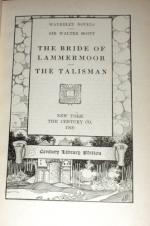The administration of justice, in particular, was infected by the most gross partiality. A case of importance scarcely occurred in which there was not some ground for bias or partiality on the part of the judges, who were so little able to withstand the temptation that the adage, “Show me the man, and I will show you the law,” became as prevalent as it was scandalous. One corruption led the way to others still mroe gross and profligate. The judge who lent his sacred authority in one case to support a friend, and in another to crush an enemy, and who decisions were founded on family connexions or political relations, could not be supposed inaccessible to direct personal motives; and the purse of the wealthy was too often believed to be thrown into the scale to weigh down the cause of the poor litigant. The subordinate officers of the law affected little scruple concerning bribery. Pieces of plate and bags of money were sent in presents to the king’s counsel, to influence their conduct, and poured forth, says a contemporary writer, like billets of wood upon their floors, without even the decency of concealment.
In such times, it was not over uncharitable to suppose that the statesman, practised in courts of law, and a powerful member of a triumphant cabal, might find and use means of advantage over his less skilful and less favoured adversary; and if it had been supposed that Sir William Ashton’s conscience had been too delicate to profit by these advantages, it was believed that his ambition and desire of extending his wealth and consequence found as strong a stimulus in the exhortations of his lady as the daring aim of Macbeth in the days of yore.
Lady Ashton was of a family more distinguished than that of her lord, an advantage which she did not fail to use to the uttermost, in maintaining and extending her husband’s influence over others, and, unless she was greatly belied, her own over him. She had been beautiful, and was stately and majestic in her appearance. Endowed by nature with strong powers and violent passions, experience had taught her to employ the one, and to conceal, if not to moderate, the other. She was a severe adn strict observer of the external forms, at least, of devotion; her hospitality was splendid, even to ostentation; her address and manners, agreeable to the pattern most valued in Scotland at the period, were grave, dignified, and severely regulated by the rules of etiquette. Her character had always been beyond the breath of slander. And yet, with all these qualities to excite respect, Lady Ashton was seldom mentioned in the terms of love or affection. Interest—the interest of her family, if not her own—seemed too obviously the motive of her actions; and where this is the case, the sharp-judging and malignant public are not easily imposed upon by outward show. It was seen and ascertained that, in her most graceful courtesies and compliments, Lady Ashton no more lost sight of her object than the falcon in his airy wheel turns his quick eyes from his destined quarry; and hence, somethign of doubt and suspicion qualified the feelings with which her equals received her attentions. With her inferiors these feelings were mingled with fear; an impression useful to her purposes, so far as it enforced ready compliance with her requests and implicit obedience to her commands, but detrimental, because it cannot exist with affection or regard.




